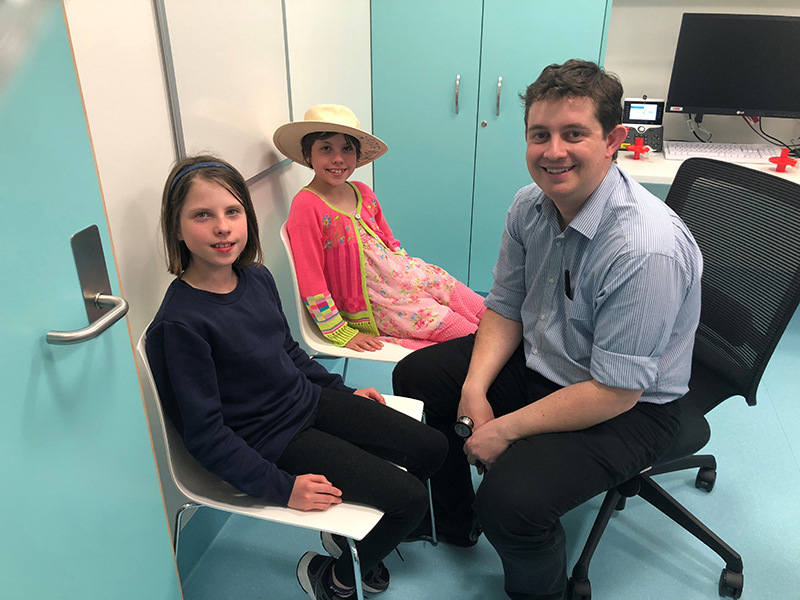Search
Research
Changes in lung volume during spells in children with Tetralogy of Fallot under general anesthesiaTo describe the changes in end-expiratory lung volume and ventilation inhomogeneities during spells in three children with Tetralogy of Fallot.
Research
Lung function testing in preschool-aged children with cystic fibrosis in the clinical settingThis study investigated the nature and prevalence of atypical pain responses in Rett syndrome and their relationships with specific MECP2 mutations.

News & Events
Can a simple urine test predict asthma? New study aims to find outThe Kids Research Institute Australia researchers are investigating whether a simple urine test could predict whether young children with wheezing symptoms will go on to develop asthma.

News & Events
Premmie twins defy the oddsWhen Samuel and James Considine were born in October 2003, perilously close to what the medical world describes as the limit of viability, each weighed just 700 grams and could fit into the palm of their father’s hand.

News & Events
My child is wheezing – what should I do?Almost 50 per cent of preschool children will experience at least one episode of wheeze, a whistling sound produced by the airways during breathing.
Research
FINGERPRINT: FINdinG Early markers of Respiratory disease for survivors of PReterm birth which IdeNtify Treatable traitsThis research project will investigate the traits of preterm lung disease, looking into the long-term lung health of children born preterm, aiming to identify traits that could help guide better treatments in the future.
Research
The Impact of Modulator therapy from Early life on lung health trajectories in Cystic Fibrosis (TIME-CF)Cystic fibrosis is an inherited condition that results in chronic lung disease. In recent years, a new type of medication called CFTR modulators has become available.
Research
The Global Lung Initiative 2012 reference values reflect contemporary Australasian spirometryWe aimed to ascertain the fit of the European Respiratory Society Global Lung Initiative 2012 reference ranges to contemporary Australasian spirometric data.
Research
Crowding and other strong predictors of upper respiratory tract carriage of otitis media-relatedWe investigated predictors of nasopharyngeal carriage in Australian Aboriginal and non-Aboriginal children.
Research
Prolonged use of wind or brass instruments does not alter lung function in musiciansRespiratory function impacts on musical expression for wind/brass (W/B) musicians. Investigation of musicians' respiratory health to date has rarely...
